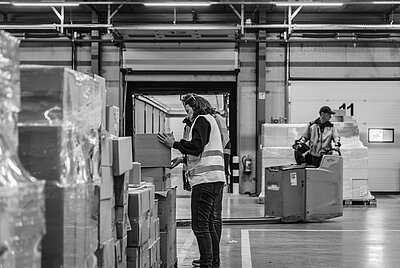The international energy crisis is to a large extent being driven by the imbalance between global gas supply and demand. Gas prices across Europe have been on a steep upward trajectory this summer after a long, cold winter left storage levels far below normal.
Russia has also been sending over less gas than usual to Europe, which many experts have interpreted as a move to put pressure on European leaders to open a controversial pipeline project called Nord Stream 2.
More broadly, there has been rampant demand for shipping tankers and energy in Asia – which quickly bounced back from the pandemic – leaving less available for the rest of the world.
As Francesca Washtell writes in This is Money: “It is China, the world’s economic powerhouse, that is facing a toxic cocktail that is terrifying analysts. There, coal stocks – a major source of the country’s power – are down to dangerously low levels which is leading to blackouts and a massive drop in industrial production. If these problems end up tanking its productivity and holding back its economy, then the whole world is in trouble.”
The energy crisis is having a knock-on effect on the recycling and paper industries. As MRW reports, the Confederation of Paper Industries (CPI) warned the “unprecedented” and sustained rise in energy prices had the potential to be “extremely damaging” and disrupt production of paper goods from retail & food packaging, and toilet tissue, to newsprint.
The Economist reports of armadas of vessels waiting outside ports and an increase in shipping costs – four times higher than a year ago.
We are feeling it more because the whole manufacturing world was working on the just-in-time (JIT) manufacturing model, first developed in Japan in the 1970s. Its aims are to reduce timing delays and costs by perfecting the timing of ordering materials. The goal is to have no more materials on hand—and no fewer—than you need at that moment. In alternative manufacturing methods, unusual spikes in customer demand can be offset by safety stock, which provide insurance against failures in production, quality issues, and other unforeseen issues along those lines. With JIT, on the other hand, the business attempts to synchronise its operations so perfectly that there isn't a need for added safety stocks.
We have occasionally heard in the past about a business or an industry being affected by an issue affecting supply, for example a bad weather season. Today, it is not one issue but a combination of challenges that we have experienced over the past 18 months in our global economy that has led to the problems in the supply chain today. And forecasts are saying that this is a situation that is likely to last to at least until March 2022.
Be creative with solutions
If you are affected, what can you do?
1. Be agile and creative
Businesses are playing catch up to rapidly meet changing consumer demands as the world’s retail centres reopen after pandemic lockdowns. Consumer buying and purchasing is on the increase. Businesses need to be agile to respond to these pressures while still ensuring continuity of packaging supply and maintaining quality control. If we can be creative with solutions in the short to medium time, the pressure will be lifted from retailers and their suppliers.
2. Partner with forward-thinking suppliers
Ask your supply chain partners and suppliers for their advice. Depending on where they are in the supply chain, they will have seen this challenge coming and may well already have plan B and C in the pipeline. Forward-thinking suppliers will be able to buffer even the most frightening scenarios. However, they cannot perform miracles overnight. The more time you can give them and the more information you can share about your requirements in advance, the better.
3. Talk with your supplier
Is there room in the contract to be creative? Many customers are fearful of contractual agreements but if you can work with your supplier and there is some flexibility in contractual agreements, the creativity that is needed to navigate this situation may help you come up with a solution. Speak to them frankly about what you want and what you need.
Currently, the whole world’s economic and supply chain systems are going through a seismic shift. In a sea of change, make sure you work with your supply chain partners to navigate and stay afloat rather than being pulled under. Like the Covid-19 pandemic, we are all in this together, so let us find some work arounds.


